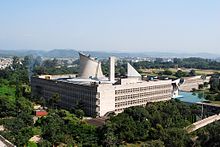
Balram Jakhar was an Indian politician, who served as the Speaker of the Lok Sabha and Governor of Madhya Pradesh. He was also the longest serving Speaker of the Lok Sabha, whose tenure lasted 9 years and 329 days. Jakhar was among the popular faces of Jat politics in Rajasthan during 1980s. He served as the Minister of Agriculture and Farmers Welfare from 1991 to 1996 in Government of India. He was a member of Indian National Congress.

The Punjab Legislative Assembly or the Punjab Vidhan Sabha is the unicameral legislature of the state of Punjab in India. The Sixteenth Punjab Legislative Assembly was constituted in March 2022. At present, it consists of 117 members, directly elected from 117 single-seat constituencies. The tenure of the Legislative Assembly is five years unless dissolved sooner. The Speaker of the sixteenth assembly is Kultar Singh Sandhwan. The meeting place of the Legislative Assembly since 6 March 1961 is the Vidhan Bhavan in Chandigarh.
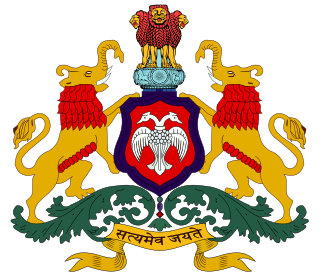
The Karnataka Legislative Assembly is the lower house of the bicameral legislature of the southern Indian state of Karnataka. Karnataka is one of the six states in India where the state legislature is bicameral, comprising two houses: the Vidhan Sabha and the Vidhan Parishad .
The Government of Punjab or locally as the State Government, is the supreme governing authority of the Indian state of Punjab, India and its 23 districts. It consists of an executive, led by the Governor of Punjab, a judiciary and a legislative branch Punjab State.

The Gujarat Legislative Assembly or Gujarat Vidhan Sabha is the unicameral legislature of the Indian state of Gujarat, in the state capital Gandhinagar. Presently, 182 members of the Legislative Assembly are directly elected from single-member constituencies (seats). It has a term of 5 years unless it is dissolved sooner. 13 constituencies are reserved for scheduled castes and 27 constituencies for scheduled tribes. From its majority party group or by way of a grand coalition cabinet of its prominent members, the state's Executive namely the Government of Gujarat is formed.

The Haryana Legislative Assembly is the unicameral legislature of Indian state of Haryana. The seating of the assembly is at Chandigarh, the capital of the state. There are 90 seats in the house filled by direct election using a single-member first-past-the-post system. The term of office is five years.

Sunil Kumar Jakhar is an Indian politician and president of the Bharatiya Janata Party, Punjab unit since 4th July 2023. Jakhar, hailing from an established political family, is noted politically for his clean image and bluntness. Elected consecutively three times from Abohar Assembly constituency (2002-2017), he was the Leader of the Opposition in the Punjab Vidhan Sabha from 2012 to 2015. Jakhar was a Member of Parliament from the Gurdaspur constituency from 2017 to 2019.
Jai Krishan Singh Rouri is Deputy Speaker of Punjab Assembly. He is second term MLA in the Punjab Legislative Assembly representing the Garhshankar Assembly constituency in Punjab, India, serving since 2017. He is a member of the Aam Aadmi Party. He won a second consecutive term in the 2022 Punjab Legislative Assembly election by margin of 4179 votes.
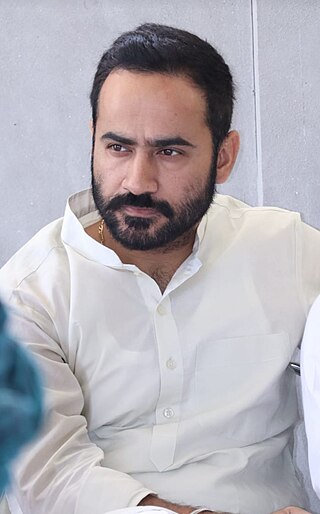
Gurmeet Singh Meet Hayer is an Indian politician and a prominent member of Aam Aadmi Party (AAP). Currently serving as the Member of Parliament, Lok Sabha for Sangrur constituency and is also the Floor leader of Aam Aadmi Party in Lok Sabha.
Baljinder Kaur is an Indian politician and member of the Punjab Legislative Assembly (MLA) representing Talwandi Sabo Assembly constituency. She is a member of the Aam Aadmi Party.

The 1972 Punjab Legislative Assembly election was the sixth Vidhan Sabha election of the state. Indian National Congress emerged as the victorious party with 66 seats in the 104-seat legislature in the election. The Shiromani Akali Dal became the official opposition, holding 24 seats. On 30 April 1977, Assembly dissolved and president rule was imposed.

The 1977 Punjab Legislative Assembly election was the seventh Vidhan Sabha election of the state. Shiromani Akali Dal and Janata Party coalition emerged as the victorious with 83 seats in the 117-seat legislature in the election. The Indian National Congress became the official opposition, holding 17 seats. On 17 February 1980, Assembly dissolved prematurely and president rule was imposed.
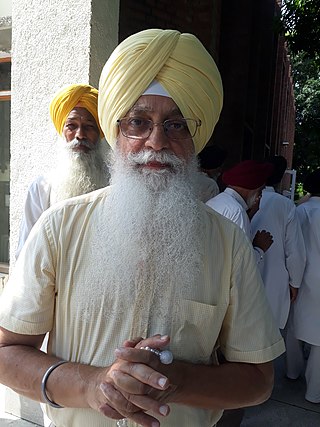
Inderbir Singh Nijjar is an Indian politician and the MLA from Amritsar South Assembly constituency. He is current President of Chief Khalsa Diwan. He is a member of the Aam Aadmi Party. He is also elected as Protem Speaker of Punjab Legislative Assembly.
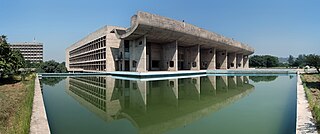
Election for the Sixteenth Legislative Assembly was held in the Indian state of Punjab. Polling was done on 20 February 2022 to elect the 117 members of the Punjab Legislative Assembly. The counting of votes declaration of results was done on 10 March 2022. The Fifteenth Punjab assembly was dissolved on 11 March 2022. The dissolution was necessitated after the results of the election was declared on 10 March. In the Sixteenth Punjab Legislative Assembly, 92 members of the ruling Aam Aadmi Party form the treasury benches. The main opposition party in the assembly is Indian National Congress with 18 seats. The other parties which are in opposition are the Shiromani Akali Dal, the Bharatiya Janata Party, the Bahujan Samaj Party and independents. AAP MLA, Kultar Singh Sandhwan was announced as the speaker of the assembly.
Sheetal Angural is an Indian politician representing the Jalandhar West Assembly constituency in the Punjab Legislative Assembly and now he is a former MLA. He was a member of the Aam Aadmi Party. He joined Bharatiya Janta Party in 27 March 2024, before the 2024 Indian General Election.
Kuljit Singh Randhawa is an Indian politician and the MLA representing the Dera Bassi Assembly constituency in the Punjab Legislative Assembly. He is a member of the Aam Aadmi Party. He was elected as the MLA in the 2022 Punjab Legislative Assembly election. He has been President of Truck Union of Derabassi for 16 years.
Sandeep Jakhar is an Indian politician and a former member of Indian National Congress. He is currently serving as a member of the Punjab Legislative Assembly from Abohar. He defeated BJP Leader Arun Narang from Abohar in 2022 Punjab Assembly Elections. He is the nephew of Punjab BJP Unit President Sunil Jakhar.
The Uttarakhand Legislative Assembly, also known as the Uttarakhand Vidhan Sabha, is a unicameral governing and law making body of Uttarakhand, one of the 28 states of India. It is seated at Dehradun, the winter capital, and Gairsain, the summer capital of Uttarakhand. The total strength of the assembly is 70 Members of the Legislative Assembly (MLA).

Vikramjit Singh Chaudhary is an Indian politician representing the Phillaur Assembly constituency in the Punjab Legislative Assembly. He is a member of Indian National Congress.

Gujarat Legislative Assembly or Gujarat Vidhan Sabha is the unicameral legislature of the Indian state of Gujarat, in the state capital Gandhinagar. Presently, 182 members of the Legislative Assembly are directly elected from single-member constituencies (seats). It has a term of 5 years unless it is dissolved sooner. 13 constituencies are reserved for scheduled castes and 27 constituencies for scheduled tribes. From its majority party group or by way of a grand coalition cabinet of its prominent members, the state's Executive namely the Government of Gujarat is formed.


